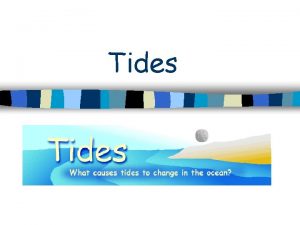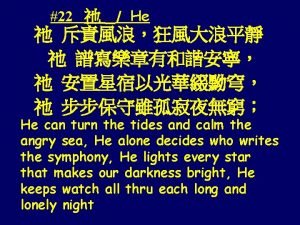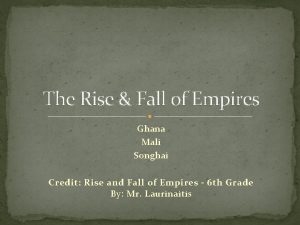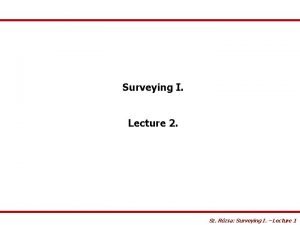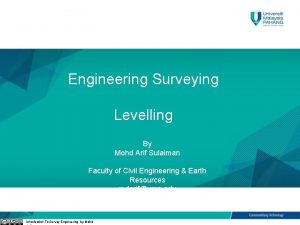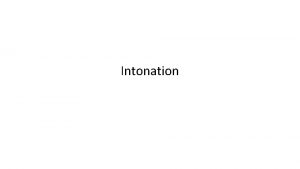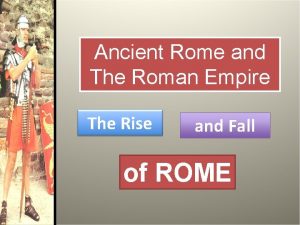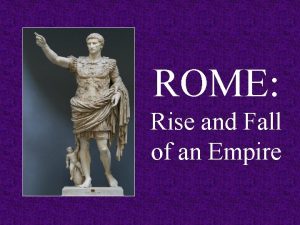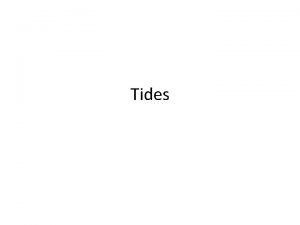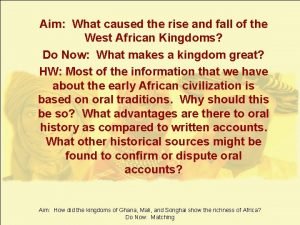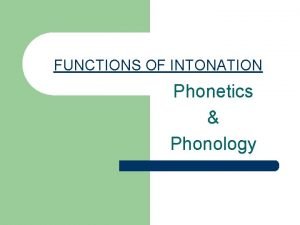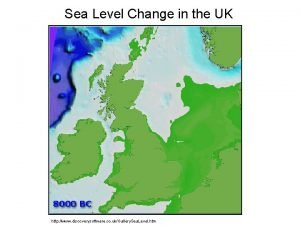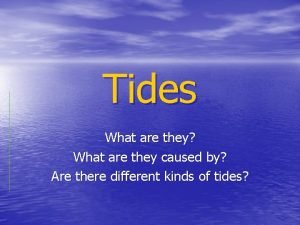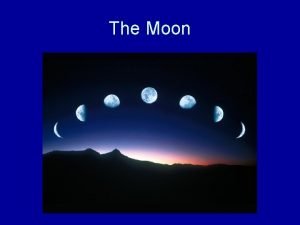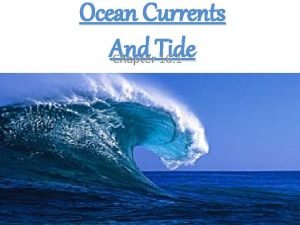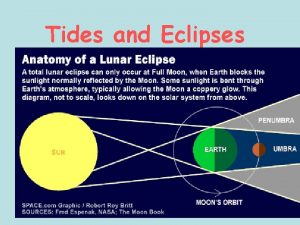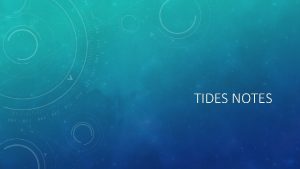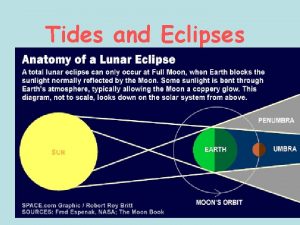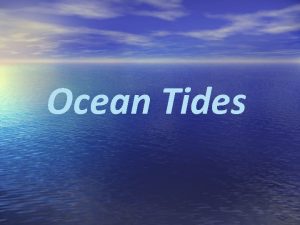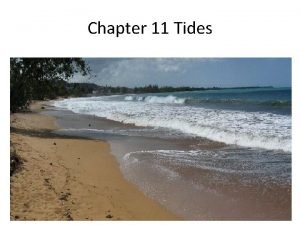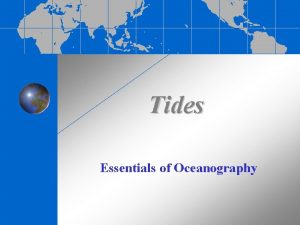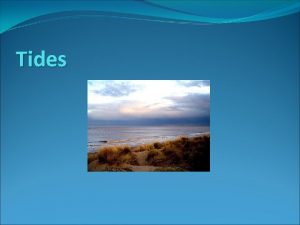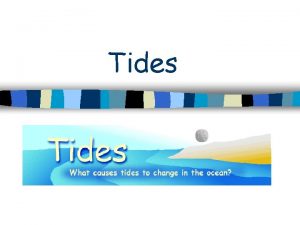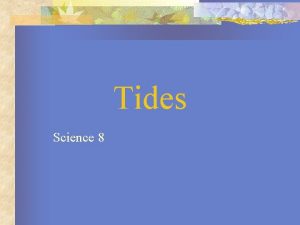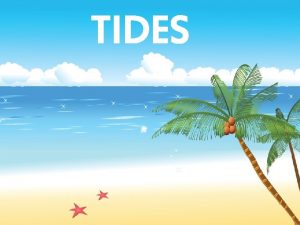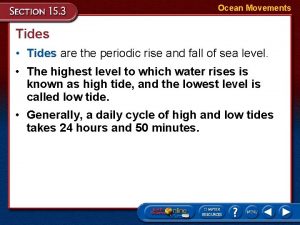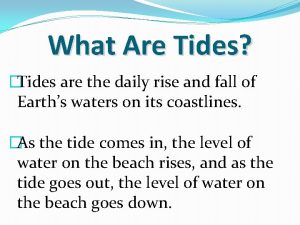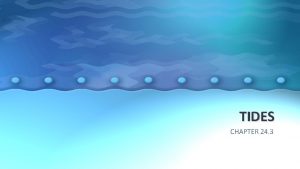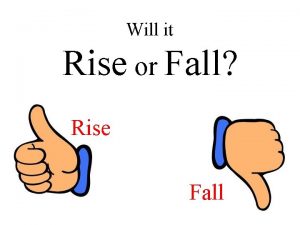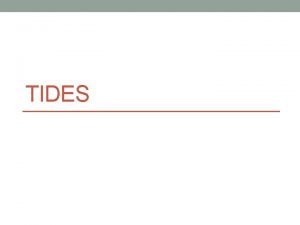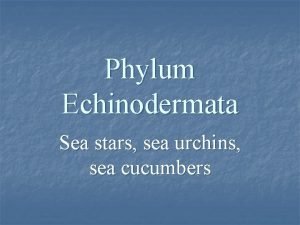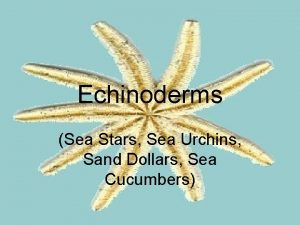Tides Tides The rise and fall in sea









































- Slides: 41

Tides

Tides • The rise and fall in sea level is called a tide. • Caused by a giant wave. • One low-tide/high-tide cycle takes about 12 hrs and 25 min.

Tides • Tides are caused mainly by the gravitational pull of the moon.

Other Things That Influence Tides • The gravitational pull of the sun. • The distance of the sun and the moon from earth. • Winds and other factors.

Tides (cont’d. ) • Tides tend to be high where the gravitational force between the earth and the moon are the strongest, along with the opposite side of the earth where the centrifugal force is strongest.

Tidal Range The difference in ocean level between high tide and low tide is called the tidal range

What is the Tidal Range? • HT = 30 ft LT = 20 ft • HT = 20 ft LT = 12 ft • HT = 50 ft LT = 20 ft

Spring Tides • Spring Tides have the greatest range –High Tides are higher and Low Tides are lower than normal • Occurs during the new and full moons. • Earth, Moon, and Sun are lined up

Neap Tides • Neap Tides have the least amount of range. • High Tides are lower and Low Tides are higher than normal • Occurs during the first and third quarters. • Earth, Moon, and Sun form right angles

Gravitational Effect of the Moon • Two big bulges of water form on the Earth: –one directly under the moon –another on the exact opposite side • As the Earth spins, the bulges follow the moon.





Waves

Waves • A Wave is a rhythmic movement that carries energy through matter or space. • In oceans, waves move through seawater

Waves Caused by: • Wind • Earthquakes • Gravitational force of the Moon and Sun.

Waves On The Beach • Most of the waves we see are at the beach.

Waves On The Beach • As the wave travels in shallower water it slows and eventually falls forward as a breaker.

Wind or Storm Waves • The most familiar waves are wind generated.

Wind or Storm Waves • Three things determine how large these waves can become.

1. Wind Speed • This is the speed that the wind is blowing. • This is usually measured in knots or nautical miles per hour.

2. Duration • Duration refers to the time over which the wind blows. • Winds in some areas may blow strong for long periods of time which can produce large waves.

3. Fetch • Fetch refers to the distance over which the wind blows. • If a wind blows over thousands of miles the waves can get much larger than blowing across a small pond.

Parts of a Wave • Crest – highest point of a wave • Trough – lowest point of a wave • Wave Height – vertical distance between the crest and the trough • Wavelength – horizontal distance between two crests or two troughs

Wavelength Wave Height Crest Still Water Trough Wave Parts

Wave Movement • When a wave passes through the ocean, individual water molecules move up and down but they do not move forward or backward.


Wave Movement • When a wave breaks against the shore, the crest outruns the trough and the crest collapses. • Called a breaker. • In this case, water does move forward and backward.


Waves Caused by Wind • When wind blows across a body of water, friction causes the water to move along with the wind.

Waves Caused by Wind • Wave Height depends on – –Wind speed –Distance over which the wind blows –Length of time the wind blows




Tsunamis • Tsunamis were once called Tidal waves, but they have nothing to do with the tides.

Tsunamis • They are produced by earthquakes and other seismic disturbances. That’s why they’re also called seismic sea waves.

Tsunamis • They are very long, fast moving waves. • They can have wavelengths of 150 miles. • They can travel at over 450 miles per hour! As fast as a jet!

The Danger of Tsunamis • In the open ocean, a tsunami may only have a wave height of a few feet.

The Danger of Tsunamis • As the wave approaches shallow water, it builds to heights that can reach greater than 100 feet.

 Richard nixon tricky dicky
Richard nixon tricky dicky Spring tide and neap tide
Spring tide and neap tide Compare and contrast spring and neap tides.
Compare and contrast spring and neap tides. Rise and rise again until lambs become lions
Rise and rise again until lambs become lions Little lambs academy
Little lambs academy A union b example
A union b example He can turn the tides and calm the angry sea
He can turn the tides and calm the angry sea He can turn the tides
He can turn the tides The periodic daily rise and fall of ocean water
The periodic daily rise and fall of ocean water Rise and fall of mali
Rise and fall of mali Napoleon assignment
Napoleon assignment Rise and fall method
Rise and fall method China opium war political cartoon
China opium war political cartoon Inverted staff reading in surveying
Inverted staff reading in surveying Napoleon bonaparte achievements timeline
Napoleon bonaparte achievements timeline The rise and fall of the voice in speaking
The rise and fall of the voice in speaking Roman road
Roman road Rome rise and fall of an empire
Rome rise and fall of an empire Edabs
Edabs The periodic daily rise and fall of ocean water
The periodic daily rise and fall of ocean water Hitler birth
Hitler birth Rise and fall of greek civilization
Rise and fall of greek civilization Mali rise and fall
Mali rise and fall Final intonation patterns examples
Final intonation patterns examples The functions of intonation
The functions of intonation Sea level rise map uk
Sea level rise map uk Opleiden 2025
Opleiden 2025 Andrew fearne
Andrew fearne Yellow sea and east china sea
Yellow sea and east china sea Marlin symbolism
Marlin symbolism Led soldiers across hellespont into anatolia goals
Led soldiers across hellespont into anatolia goals Hydra jellyfish
Hydra jellyfish Sea stack diagram
Sea stack diagram What are tides and how are they caused
What are tides and how are they caused A person standing in the moon's penumbra will see a
A person standing in the moon's penumbra will see a Citlalli dominguez
Citlalli dominguez Spring tide vs neap tide
Spring tide vs neap tide Shifting tides timeline and map
Shifting tides timeline and map Shifting tides timeline and map
Shifting tides timeline and map Shifting tides timeline and map
Shifting tides timeline and map Tides and eclipses
Tides and eclipses Semidiurnal tide
Semidiurnal tide

